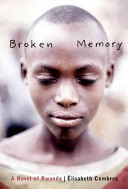
Hiding behind the old sofa, five-year-old Emma does not witness the murder of her mother, but she hears everything. And when the assassins finally leave, the young Tutsi girl somehow manages to stumble away from the scene, motivated only by the memory of her mother’s last words: “You must not die, Emma!” Taken in by an old Hutu woman, Mukecuru, Emma is still haunted by nightmares long after the war ends. When the country establishes gacaca courts to allow victims to face their tormenters in their villages, Emma is uneasy and afraid. But through her growing friendship with a young torture victim and the gentle encouragement of an old man charged with helping child survivors, Emma finds the courage to return to the house where her mother was killed and begin the journey to healing.
See the review at WOW Review, Volume 3, Issue 4
- ISBN: 9780888998934
- Author: Combres, Élisabeth
- Published: 2009 , Groundwood Books
- Themes: Culture, Friendship, Genocide, Survival, War
- Descriptors: Africa, Historical Fiction, Rwanda, Young Adult (ages 14-18)
- No. of pages: 144

My name is Kerrianne Lynch and I am a student at Hofstra University in New York. I really enjoyed reading this book and would highly suggest it to any one interested in reading about the genocide in Rwanda. The book was beautifully written. The book is a work of fiction that details the life of a young genocide survivor Emma, who through out the novel struggles with nightmares about the day her mother was murdered by a group of Hutu men in 1994. The novel details Emma’s journey as she tries to make peace with her bad memories. I really enjoyed reading about Emma and her inspirational journey to get her life back and not to get stuck in her nightmares forever.
I found this book to be a really valuable book for young adults. The Rwandan genocide is rarely talked about much in schools and young students rarely hear about it. It was great that this book shed light on the atrocities that occurred in Rwanda because I don’t think many students realize the horrors that have taken place in other parts of the world. Students should learn more about the recent history of places like Africa, and this book is a great tool to do that with. This book helps to give a student a unique perspective of what it was like to suffer through a genocide and can help them better understand what the Rwandan survivors have been through. My hope would be that this book can help spark an interest in the topic of Rwanda and can help students open their minds to the experiences of others in other countries.